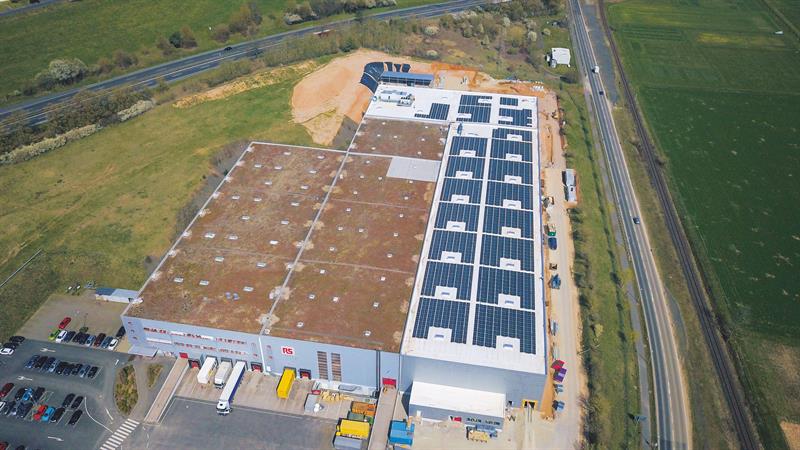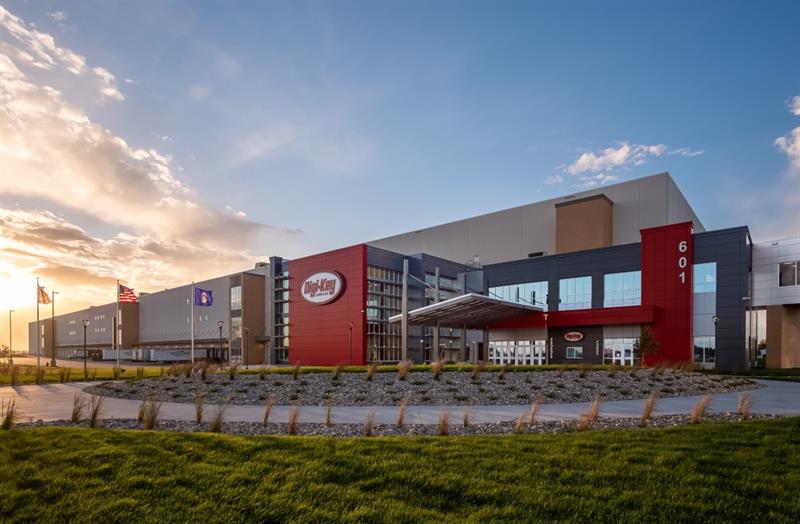Not only have businesses had to contend with a massive supply shock, which started in China in February, but a demand shock too that continues to reverberate across the Americas and Europe.
The crisis caused by the pandemic and the likelihood of a deep recession have exposed weaknesses in supply chains and many companies have had to revisit their supply networks, review their operations for vulnerabilities and take numerous actions to better manage risk and ensure greater robustness.
“Like most distributors with operations in Asia we knew what the potential problems could be when the pandemic first appeared,” explained Rob Rospedzhowski, President, Sales, Farnell EMEA, “but none of us expected the severity of the pandemic and the challenges it has poised for our supply chains, our customers and the sectors we serve.”
“The pandemic has shown that global supply chains can be very fragile, especially if they involve single source products,” added Chris Beeson, Group Senior Vice President Electronics, Electrocomponents (incorporating RS Components).
According to research conducted by the Institute of Supply Management, 75% of companies suffered supply chain disruptions due to transport restrictions and half had no contingency plan for supply chain disruption leading back to China.
“Firms need to consider supply options from multiple, geographically disparate sources, where possible,” said Beeson. “It’s no longer enough to focus on reducing procurement and production costs through techniques such as just-in-time and lean manufacturing. The challenge now is to balance building resiliency into the supply chain, without compromising efficiency or adding excessive costs.”
Despite these challenges business activity has held up. The third quarter saw economies in Europe and the US register strong growth, while engineers have continued to innovate. As a consequence distributors, both here and in the US, have made the most of this challenging period and continued to provide customers with competitively priced, high quality products that are fit for purpose, meet specifications and that are delivered on time. Distributors have had to adapt and have helped their customers more when it comes to sourcing components.
“Purchasing patterns have changed. We had a strong online presence online already across EMEA, but over the course of the pandemic some markets have moved from around 80 per cent of our business being online to over 90 per cent,” said Rospedzhowski. “Customers are now working from home so we’ve seen an increase in demand outside of normal operating hours. Demand has now moved across a much wider time frame.”
“Although still in the middle of the pandemic, customers are now looking to get back to some form of normality and it seems like they are increasing design and production,” added Mark Laing, UK & Ireland Regional Business Development Manager, Digi-Key Electronics. “Hopefully the positive trend will continue. Many customers are receiving unplanned orders right now. We know our customers rely on stable supply chains to stay in business, and Digi-Key’s business model is designed to deliver continuity and consistency.”
“Throughout 2020, customers have been burning through any inventory that they have built up and we are already starting to see demand building up. Some of the high volume users of components in the automotive and consumer electronics sectors are ramping up quickly now,” said Steve Rawlins, CEO, Anglia Components. “New consoles are coming up and demand for 5G is kicking in. We expect to see lead times lengthening in 2021 and it may even be a boom year,”
Rawlins added that Anglia was also seeing increased demand in terms of access control, smart buildings and other areas which contribute to public safety and well-being.
“We’ve found that the pandemic has accelerated technologies and concepts by as much as ten years. Customers are moving rapidly from thinking ‘we could add this function to our product’ to ‘we must add it.’ Projects that have been sitting on the shelf waiting for funding or resource have been dusted down and implemented.”
Investment
For a number of distributors significant investments were planned for 2020 and beyond, and most have continued to invest significant amounts, whether in new facilities or services.
“In a crisis like this, the crucial thing is to look past it. Those who maintain investment will bounce back quickly as the market recovers, which it will, probably sooner than we think,” observed Rawlins.
“Customers have embraced online ordering and we are seeing an increase in demand for value-added procurement services,” added Beeson. “Our digital infrastructure and data analysis tools have allowed us to adapt swiftly to new working restrictions, varying customer demand and changes in buying behaviour.”
According to Beeson, Electrocomponents has focused on delivering a more scalable and efficient business model. It has invested in a newly expanded and highly automated distribution centre in the Americas, which is now operational, and its distribution centre in Germany is on track to open in the summer of 2021.

“Despite the uncertainty, we are continuing to invest as we meet these new challenges with innovative new solutions, while providing consistency and efficiency for customers,” said Laing. “Digi-Key’s brand new 2.2 million square foot Product Distribution Centre is opening in 2021 which will provide an even better service for our customers. We know what our customers want and we continue to invest where it is most important - the right parts, available in stock, delivered accurately and on time.”
Crucially, customers are still designing, building and innovating across most markets and continue to require support from distributors.
“Mouser has maintained high inventory levels, and we have continued to invest heavily in our facilities,” said Mark Burr-Lonnon, Senior VP of Global Service & EMEA and APAC Business, Mouser Electronics. “Furthermore, we have expanded our online resources for design engineers, including our Technical Resource Centre, the Customer Resource Centre, the Price and Availability Assistant, Online Calculators, and the Mouser-Molex custom cable creator. Online resources remain a key part of our efforts to serve our customers.
Much like other distributors Mouser has continued to invest opening a new Customer Service Centre building, deploying state-of-the-art automation, in order to enhance efficiency, productivity, accuracy and speed of dispatch.
“Customers want to be able to schedule component orders in advance. It gives them predictability and visibility, securing their product orders ahead of time. Orders can now be scheduled in various ways, depending on quantities and whatever works best for them,” said Burr-Lonnon. “Effective communication remains critical to success. We are in constant contact with our customers to ensure that they experience consistency of supply. They see us as a facilitator, and they expect us to have an in-depth understanding of the market.”
Operations
In response to Covid-19 distributors have not only had to engage differently with their customers but have also had to alter working practices too.
“We have been investing in initiatives to ensure the safety and wellbeing of employees in the workplace – our own, as well as our customers’,” said Beeson. He continued, “We very quickly implemented flexible working practices including new support structures for home working and resources to help our employees stay mentally and physically well. We have made changes to our operating procedures in our 12 distribution centres around the globe, including the provision of PPE, social distancing measures and split shifts.
“Another early initiative was an employee assistance programme and wellbeing hub to keep colleagues connected.”
According to Beeson four key themes have emerged as a result of the pandemic.
“There are the accelerating need for businesses to work digitally; the heightened importance of supply chain continuity; an increased focus on innovation and efficiency; and improved safety in the workplace,” he explained.
Anglia, which is a privately owned business, has been in the fortunate position to be able to take the long term view, according to Rawlins.
“The market will recover, and we’ve kept our dedicated team together which I believe has put us in a strong position when it does,” Rawlins said. “We haven’t had to make anyone redundant. We did furlough staff, however, but most of them are now back at work. “To protect those working from the office, we have invested heavily in PPE, including installing Perspex screens for safe distancing and further protection for the staff.”
For distributors, like many businesses trying to operate in these unique times, employees have faced many different challenges, whether in their personal lives, such as having children at home because schools are closed, or other interruptions to normal routines.
“We are certainly proud of the many ways Digi-Key employees have stepped up to support our customers. Many have put in overtime at our Product Distribution Centre, and some have even completely switched over to working at the PDC for several weeks, putting their regular responsibilities on hold,” said Laing.

“While other companies may be experiencing long shipping delays, our team is doing everything possible to ensure customers don’t experience any differences in their orders and deliveries from Digi-Key.”
So what will 2021 bring?
Most distributors see continued business growth into 2021, in part due to the resilience shown by the electronics industry throughout 2020.
“There is now pent-up demand in Europe, we're expecting to end 2020 with a growth of about 8% over last year, and looking forward, we are cautiously optimistic and believe this momentum will carry into 2021. Anecdotally, there has been talk of a tremendous amount of innovation taking place in our industry, as engineers have made the most of quieter times during lockdown, so there could be a wave of new projects emerging as we begin the new year,” suggested Burr-Lonnon.
The question of risk is an interesting one, according to Beeson, as it is always embedded into the world of technology and business in general. “One lesson from 2020 is that you always need to be prepared and quick to respond to a changing business environment; this has certainly been tested this year. It’s extremely important to be aligned to all aspects of business, including component shortages, changes in government policies, trade policies, logistic resources, and pricing trends.”
The impact of the pandemic will be with us for some time and will continue across 2021 and with issues like Brexit, recession, trade disputes
and continued in-fighting between the US and China to contend with distributors will face a host of challenging factors throughout the year.
How they will respond is summed up succinctly by Laing.
“Most of these factors are out of our control. All we can do at Digi-Key is to continue to focus on what we can control, that is listening to our customers, investing in products and services which will make their lives easier, and keeping our employees safe.”













